Building with nature in Demak, Indonesia
Summary
The mangrove-mud coast of North Java, Indonesia, is eroding rapidly. Mangroves are being converted into aquaculture, and large-scale groundwater extraction induces land subsidence. The Indonesian government responded by piloting the Building with Nature (BwN) approach in the Demak district of Central Java province. The aim was to rehabilitate the mangrove greenbelt, equip communities to maintain it, and boost aquaculture productivity in a sustainable way.
Permeable structures were constructed from local natural materials in an effort to stop or reverse coastal erosion by trapping sediment that mangroves can recolonize. Some aquaculture ponds were also reconverted to mangrove habitat. Community ownership was built through dialogue, capacity building in coastal field schools, and a financial incentive mechanism called bio-rights: in return for their engagement in conservation and restoration measures, communities received financial and technical support to develop sustainable livelihoods by boosting aquaculture productivity and developing eco-tourism.
The program was a partial success. Mangroves were not successfully restored behind the permeable structures because rates of subsidence proved to be too high. Erosion was halted, however, and mangroves recovered where communities made space for them by giving up part of degraded aquaculture ponds. The socio-economic interventions were highly successful: a cost-benefit analysis showed that breakeven could be met after about five years on the basis of higher incomes from aquaculture alone.
Coastal erosion due to aquaculture and subsidence
Demak is situated in the north of Central Java, the most densely populated of Indonesia’s 5,000 islands and home to 60 percent of the country’s total population of almost 290 million. It has a per capita GDP of around US$ 4,000. The Indonesian archipelago is rich in natural resources and has one of the world’s most bio-diverse ecosystems. Northern Java faces the shallow Java Sea, where the tidal range does not exceed one meter and waves rarely top 0.5 meters. The climate is tropical, with most coastal erosion occurring during the monsoon season between November and February. The coastal plain is alluvial, with thick deposits of mud—primarily clay, with some sand. It was once covered with a wide, dense mangrove belt, but more than 80 percent of it has disappeared.
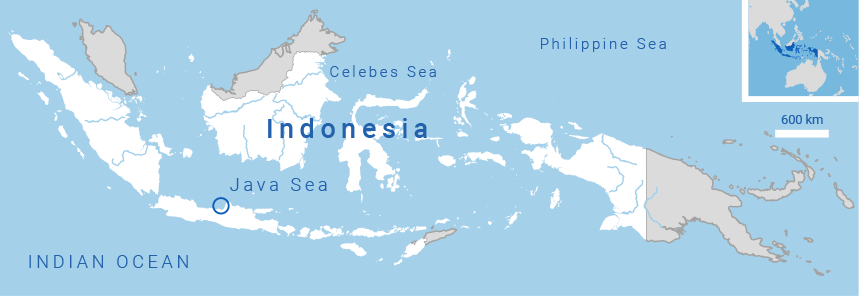
Around 44 percent of Java’s total 1,690-kilometer northern coastline is now eroding, in some locations by more than 50 meters per year, causing annual economic losses estimated at US$ 2.2 billion. Without interventions, on average a six-kilometer-wide stretch of the entire north coast will become prone to regular flooding by 2030. Traditional protection measures—dikes, levees and seawalls—have proved both expensive and ineffective. They fail to deliver the many economic, environmental, and social services which the mangrove belt can provide. The ecosystem services provided by mangrove forests, including coastal protection, have been valued at US$70,000 per hectare per year.
Java’s mangroves have been destroyed to create space for aquaculture ponds since large-scale aquaculture started in the 1970s. The productivity of these ponds was always low, and became even lower over time due to poor practices and salinization. Rural poverty is widespread. Land subsidence is a second major driver of mangrove destruction and coastal erosion in Java, causing further deterioration in conditions for local communities. Subsidence is caused by excessive extraction of groundwater to meet the demands of industrialization and the growing urban population. In some cases, significant land subsidence can occur as far as 20 kilometers away from the extraction site.
Other contributory causes of coastal erosion include the construction of coastal infrastructure, disturbing sediment build-up from offshore, and sand mining in rivers—along with damming and channelization—reducing sediment input into the coastal system. The impacts of climate change and sea-level rise are so far relatively small in comparison, but likely to become increasingly important as time goes by.
The intervention: Restoring mangroves and improving livelihoods
A team led by the NGO Wetlands International, in collaboration with the Indonesian government and local community, tested a BwN approach through a small-scale pilot in 2013 in Timbulsloko, a village in Demak. This led in 2015 to the development of a district-scale BwN initiative along 20 kilometers of coastline, led by local authorities, the Indonesian Ministry of Marine Affairs and Fisheries (MMAF) and the Ministry of Public Works and Housing (MPWH), and supported by Wetlands International and Ecoshape Foundation.
BwN is a design philosophy, covering a wide range of problems and systems65. In the U.S. this approach is known as Engineering with Nature66. The BwN approach in Demak had two main aims.
The first was restoring natural sediment dynamics conducive to mangrove forests. This involved constructing permeable structures to form sedimentation basins of a few hundred square meters. The structures should dampen waves, enabling new sediment accretion behind them where mangroves can settle. The structures are made of relatively cheap natural materials such as bamboo. They are designed in collaboration with local communities, and are easy to construct and maintain using local materials and manual labor.
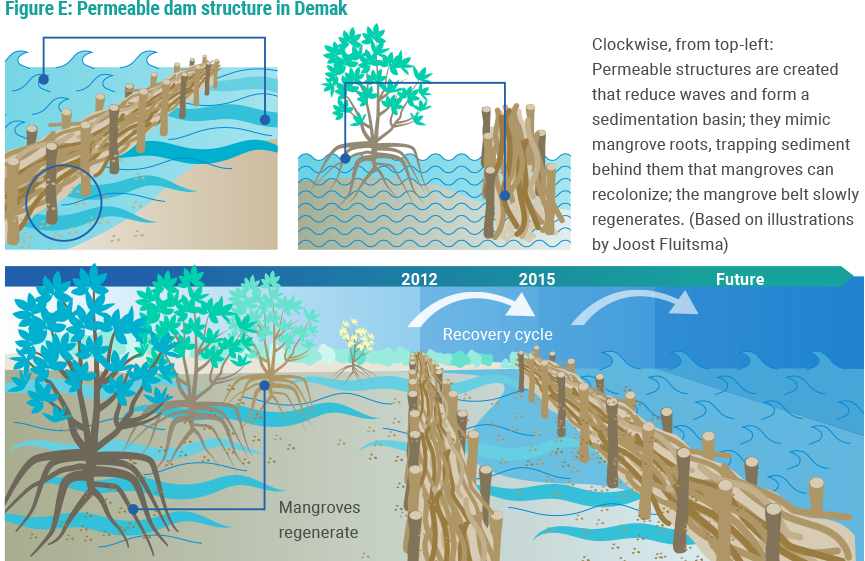
Figure E shows a permeable structure and illustrates how the approach can gradually reclaim land lost to erosion: when mangrove forest colonizes the newly accreted sediment, new structures can be erected further out to sea. These low-tech permeable structures speed up the natural sedimentation and accretion processes which would, when left alone, eventually restore a degraded coast, though this may take decades or centuries.
In areas where erosion was less severe, degraded fishponds were converted into sedimentation basins that can be recolonized by mangroves—a managed retreat of the coastline, rather than an attempt to reclaim land already lost. Along rivers, pond bunds were moved back to allow mangroves to recolonize the riverbank.
The second aim was improving living standards for local communities through a long-term (five to 10-year) program linked to their involvement in, and ownership of, maintaining the mangrove greenbelt. The intervention approached this in two main ways: bio-rights and a coastal field school.
Bio-Rights
Bio-rights are a financial incentive mechanism that aims to reconcile economic productivity with environmental conservation and restoration. In return for their engagement in conservation and restoration measures, communities receive financial and technical support to develop sustainable livelihoods.
Bio-rights agreements are conditional: payments are provided to communities subject to their participation in restoration measures. Small funds were made available to community groups in return for performing ‘ecosystem services’: constructing, guarding, inspecting, and maintaining permeable structure and sedimentation basins; converting degraded fishponds into sedimentation basins; and setting back the pond bunds along rivers. It was previously deemed impossible to persuade farmers to give up even degraded ponds for mangrove restoration, so this part of the intervention shows that intensive stakeholder engagement really can achieve a paradigm shift. The funds must be used for set purposes to boost livelihoods, including heightening the pond bunds, adjusting pond layouts, and buying equipment such as a machine to make fish food and probiotics from organic waste.
Coastal field schools
Coastal field schools were set up to give practical training, in improving livelihoods as well as restoring mangroves. This included improving the chemical conditions in aquaculture ponds, selecting species and food, protecting from predators, and using natural resources sustainably. Beyond technical knowledge, the schools developed farmers’ critical thinking to adapt by developing, testing and implementing new practices in an ecologically sound way.
Communities trained through coastal field schools became committed to BwN measures and leaders in developing and implementing local coastal-zone management plans. The schools pioneered an alternative practice known as associated mangrove aquaculture (AMA), in which part of an aquaculture pond is given up to make space for mangroves. These act as water filters, so higher-quality water enters the pond, together with nutrients, and introducing aquaculture best practices enables higher productivity.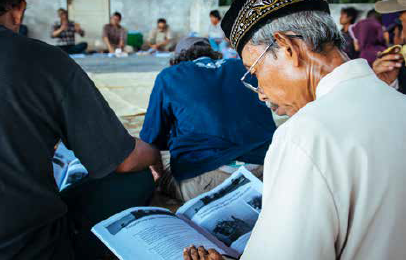
AMA uses mangrove ecosystem services to increase aquaculture production sustainably. The bio-rights and coastal field school programs are executed by 10 community groups in nine villages along the Demak coast, supported by Indonesian staff from the NGOs Wetlands International and Blue Forests, who resided in Demak district throughout the project lifetime. Local communities appoint individuals to participate in the programs, and community members are in general positive about the initiative.
While funding came initially from donors, the approach has since been adopted by the Indonesian government. All layers of government are involved: the national government MMAF has placed permeable structures at many other locations in Indonesia; PUSAIR (the research department of the Indonesian Ministry of Public Works and Housing) has developed guidelines for hybrid engineering; and Menkomar (the Indonesia Coordinating Ministry for Maritime & Investment Affairs) has launched a roadmap to address land subsidence, which the provincial government is now translating into a local one. District and village governments have allocated budget for mangrove restoration and aquaculture revitalization implementation and maintenance, and at village level stakeholders are involved in planning, execution, and maintenance.
UNDIP, a university in Semarang, was involved in monitoring and research into issues such as sedimentation rates behind the permeable structures, resilience of mangroves to subsidence and plastic contamination, and innovations in sustainable aquaculture.
The results in Demak can be considered a partial success. Erosion was halted, as the permeable structures reduced wave conditions and accreted sediment. Mangrove ecosystems were restored in areas with lower rates of subsidence, but not where subsidence was more severe: young trees initially emerged, but soon died. Analysis of the project alongside similar initiatives in Vietnam, Thailand, Suriname, and Guyana concludes that this BwN solution can cope with subsidence rates up to an estimated 10 centimeters per year, though this will vary depending on local conditions. This is not a problem with the BwN approach only: this degree of subsidence would similarly undermine more traditional approaches, requiring costly large-scale polders with drainage by pumping.
The experience in Demak shows that coastal restoration in Java should be accompanied by a program to resolve the subsidence problems. So far, however, all levels of government in Indonesia have found it difficult to address groundwater withdrawal. Partners in the Demak project managed to put this topic on the national agenda, leading to the creation of a presidential task force and the adoption in 2019 of a national roadmap to mitigate subsidence. The initiative is working with Central Java Province to translate this into a provincial roadmap.
The project has demonstrated that the bio-rights and coastal field school approach can build local communities’ ownership and involvement in coastal restoration projects and empower them to express their needs in policy dialogues, while contributing to livelihoods that increase income sustainably beyond the project’s lifetime.
Success factors: long time horizons, system understanding, stakeholder involvement
The analysis found three conditions are necessary for success.
![]() Long time horizons. Mangrove-mud coasts take decades to degrade, so it would be naive to expect rehabilitation within a few years. As the natural timescale to restore mangroves extends beyond political horizons, continued financing and support for conservation and management is an issue. This necessitates a long-term vision that has scope for adaptation through learning by doing and to accommodate initial failures, alongside a supportive policy framework and sufficient institutional capacity. The bio-rights and coastal field school programs and policy dialogues facilitate patience, persistence and continuation beyond a project’s lifetime.
Long time horizons. Mangrove-mud coasts take decades to degrade, so it would be naive to expect rehabilitation within a few years. As the natural timescale to restore mangroves extends beyond political horizons, continued financing and support for conservation and management is an issue. This necessitates a long-term vision that has scope for adaptation through learning by doing and to accommodate initial failures, alongside a supportive policy framework and sufficient institutional capacity. The bio-rights and coastal field school programs and policy dialogues facilitate patience, persistence and continuation beyond a project’s lifetime.
![]() System understanding. The long-term vision should be based on a robust understanding of both the biotic and abiotic coastal system, and of the socio-economic system. This is key to anticipate setbacks and minimize the scope for early disappointments to undermine patience and persistence.
System understanding. The long-term vision should be based on a robust understanding of both the biotic and abiotic coastal system, and of the socio-economic system. This is key to anticipate setbacks and minimize the scope for early disappointments to undermine patience and persistence.
![]() Stakeholder involvement. Jointly designing, learning by doing and capacity building are needed to build trust, maintain motivation, gain insights, and find solutions that otherwise would not have been considered. Community members must be engaged to establish a vision, design and implement measures, and enable adaptive management. For example, the design of the permeable structures was discussed and agreed with villagers to ensure it was something they could do without the need for additional equipment.
Stakeholder involvement. Jointly designing, learning by doing and capacity building are needed to build trust, maintain motivation, gain insights, and find solutions that otherwise would not have been considered. Community members must be engaged to establish a vision, design and implement measures, and enable adaptive management. For example, the design of the permeable structures was discussed and agreed with villagers to ensure it was something they could do without the need for additional equipment.
Stakeholder involvement implies both short-term incentives and long-term socio-economic prospects: the bio-rights and coastal field school programs successfully catalyzed intra- and inter-community dialogues and collaboration.
Political support has been key to success, at national and regional levels. The central government provides funds and designs for permeable structures, contracting with local communities and resolving questions over land ownership, which can be difficult. Involving all levels—central, provincial, regency, district, and village—may slow down decision-making, but increases the prospect of gaining the confidence of local stakeholders and building local ownership over time.
Scalability and replicability
The problems in Demak—including demographic and economic developments, subsidence, and climate change—are typical of those found along the coast elsewhere in Java and around the world, so the BwN approach may also be applicable in other areas and at larger scale. Mangrove-mud coasts, which are especially sensitive to subsidence, are found mainly in rural East and South Asia, Africa, Australia, and Latin and South America. Mangrove areas are being lost globally at an average rate of 0.2-0.6 percent per year. Without interventions, an estimated 30 million people on Java alone will suffer from frequent flooding by 2030.
In technical terms, there are four main conditions for considering this approach:
- A mangrove greenbelt can be restored only in locations where mangroves have grown in the past.
- Water should not be too deep, or sustainable mangrove habitat will not develop—one meter water depth at mean sea level was found in Demak to be the likely maximum, though elsewhere it may be less.
- The BwN approach needs space for natural processes to do their work, so it is generally not suitable for urban coastlines.
- Sufficient sediment should be available to be trapped—this depends on local conditions such as tidal range, wave climate, and erosion rates
The Demak case study covered about 20 kilometers of coastline. Application at a larger scale—for example, the hundreds of kilometers of degrading coastline in Java—raises the possibility of interactions among local interventions, affecting patterns of tidal and wind-driven flows, wave conditions, and the availability of sediment and propagules. A system-wide, integrated analysis is needed to set priorities. This requires a proper understanding of the integrated biotic and abiotic system, using numerical models to quantify complex effects and interactions. The socio-economic context should be conducive to commitment and patience from all stakeholders, in particular from local communities. Bio-rights and coastal field school programs can be instrumental in this.
Scalability also requires proper political support. In Indonesia it took time to persuade various ministries and provincial and district-level governments, but the approach is now becoming embedded. A research department of the MPWH has developed national guidelines for permeable structure designs, and since 2015 MMAF has erected many structures at other locations, facilitated by a capacity-building program using a training-of-trainers approach.
Eight Indonesian knowledge institutes and universities have included BwN in their curriculum, reaching over 2,000 students annually. Scaling up requires sufficient budget allocation and a cost-benefit analysis that takes into account long-term benefits. Data from Indonesia, Vietnam, and Thailand suggest that the permeable structures cost between around US$ 50 to 150 per meter to construct, and maintenance costs between US$ 30 to 80 per meter per year.
These costs must be weighed against the benefits of the BwN approach in comparison with a business-as-usual scenario, which assumes that most threatened land is lost and incomes from aquaculture stop entirely.
In Demak, the initial costs of the entire program were around €8 million, and revitalization of 300 hectares of aquaculture ponds was projected to yield a net profit of €5,000 per hectare per year, implying breakeven would be attained after about five years. This calculation does not include other potential societal benefits, including mangrove forest products such as fruits and timber, near-shore fisheries, potential carbon values, avoided damage and costs of relocating people.
Conclusions
 The BwN approach as applied in Demak is feasible, replicable and scalable given the right conditions: involved and committed stakeholders from different sectors and disciplines who are willing to exercise patience and persistence; favorable bio-physical conditions and good understanding of the bio-physical system; and limited subsidence rates.
The BwN approach as applied in Demak is feasible, replicable and scalable given the right conditions: involved and committed stakeholders from different sectors and disciplines who are willing to exercise patience and persistence; favorable bio-physical conditions and good understanding of the bio-physical system; and limited subsidence rates.
Stakeholder involvement and capacity can be built through training and short-term incentives, as shown by the bio-rights and coastal field school training programs. While the pilot project in Demak was financed by the Indonesian government and foreign donors, a quick-scan cost-benefit analysis shows that such a project can pay for itself if up-front investments can be financed, for instance via mild-conditioned loans.
References
AMA-guidelines, 2019. https://www.wetlands.org/publications/technical-guidelines-associated-man-grove-aquaculture-farms/
Delta Alliance, 2014. Comparative assessment of the vulnerability and resilience of deltas – extended version with 14 deltas, Synthesis Report, ISBN/EAN 978-94-92100-03-0.
Deltares, 2020a. Rehabilitation of a mangrove-mud coast in Timbul Sloko - Java, Indonesia. https://publicwiki.deltares.nl/display/BTG/Rehabilitation+of+a+man-grove-mud+coast+in+Timbul+Sloko+-+Java%2C+Indonesia
Deltares, 2020b. Risk Assessment North Coast Java. Deltares report 1220476-002, https://www.ecoshape.org/app/uploads/sites/2/2020/02/1220476-002-ZKS-0007_v0.1-Risk-Assessment-North-Coast-Java-final.pdf.
EcoShape, 2018. Building with Nature in Indonesia. https://www.ecoshape.org/en/pilots/building-with-nature-indonesia/
Hendra, Y., Muhari, A., 2018. Strengthening coastal resilience: Building with Nature implementation for revitalization of north coast of Java, Presented at Exchange visit “Ecosystem-based adaptation at scale through Building with Nature – Towards resilient coasts in Indonesia”, Presentation in Ca Mau, Vietnam, 21 May 2018.
Lewis III, R.R., 2005. Ecological engineering for successful management and restoration of mangrove forests. Ecological Engineering, 24, 403-418
MMAF, 2017a. Hybrid Engineering Structure – Ecosystem based engineering solution for coastal area restoration, Ministry of Marine Affairs and Fisheries, The Republic of Indonesia, ISBN:978-602-1312-39-1.
Primavera, J.H., Esteban, J.M.A., 2008. A review of mangrove rehabilitation in the Philippines: successes, failures and future prospects, Wetlands Ecology and Management, 16, 345–358.
Russi D., ten Brink P., Farmer A., Badura T., Coates D., Förster J., Kumar R. and Davidson N. (2013) The Economics of Ecosystems and Biodiversity for Water and Wetlands. IEEP, London and Brussels; Ramsar Secretariat, Gland.
United Nations, Department of Economic and Social Affairs, Population Division, Population Estimates and Projections Section, 2017. World Population Prospects – the 2017 revision.
Van Eijk, P. and R. Kumar, 2009. Bio-rights in theory and practice. A financing mechanism for linking poverty alleviation and environmental conservation. Wetlands International, Wageningen, The Netherlands.
Van Wesenbeeck, B.K., Balke, T., Van Eijk, P., Tonneijck, F.H., Siry, H.Y., Rudianto, M.E.,. Winterwerp, J.C, 2015. Aquaculture induced erosion of tropical coastlines throws coastal communities back into poverty, Ocean and Coastal Management, 116, 466-469, doi.org/10.1016/j.ocecoaman.2015.09.004.
Wetlands International, 2004. Bio-rights in theory and practice. https://www.wetlands.org/publications/biorights-in-theory-and-practice/
Winterwerp, J.C., Erftemeijer, P.L.A., Suryadiputra, N., Van Eijk, P., Zhang, L.-Q, 2013. Defining eco-morphodynamic requirements for rehabilitating eroding mangrove-mud coasts. Wetlands, 33, 3, 515-526, DOI: 10.1007/s13157-013-0409-x.
J.C. Winterwerp, T. Albers, E. J. Anthony, D. Friess, A. Gijón Mancheño, K. Moseley, A. Muhari, S. Naipal, J. Noordermeer, A. Oost, C. Saengsupavanich, S.A.J. Tas, F.H. Tonneijck, T. Wilms, C. van Bijsterveldt, P. van Eijk, E. van Lavieren and B.K. van Wesenbeeck, 2020. Managing erosion of mangrove-mud coasts with permeable dams – lessons learned, Ecological Engineering,158, 106078, https://doi.org/10.1016/j.ecoleng.2020.106078.
Worthington, T., Spalding, M., 2018. Mangrove Restoration Potential: A global map highlighting a critical opportunity. Report, 26 October 2018. https://doi.org/10.17863/CAM.39153

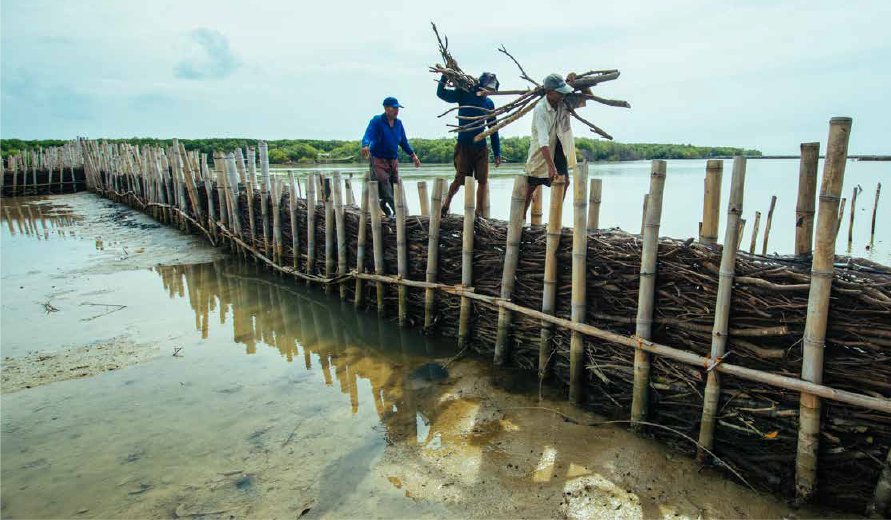
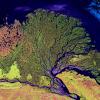


Trending Discussions
From around the site...
“Absolutely interested! I'll connect via email to discuss reviewing and enhancing the Economic Analysis of Climate...”
Adaptation-related events at COP28 (all available to follow/stream online)
“Please check out these adaptation-related events taking place at COP28 - all available online (some in person too if...”
Shining a light for biodiversity – four perspectives to the life that sustains us. Four hybrid sessions.
“30 November to 19 December 2023 - Four Sessions Introduction The SDC Cluster Green is happy to invite you to the...”